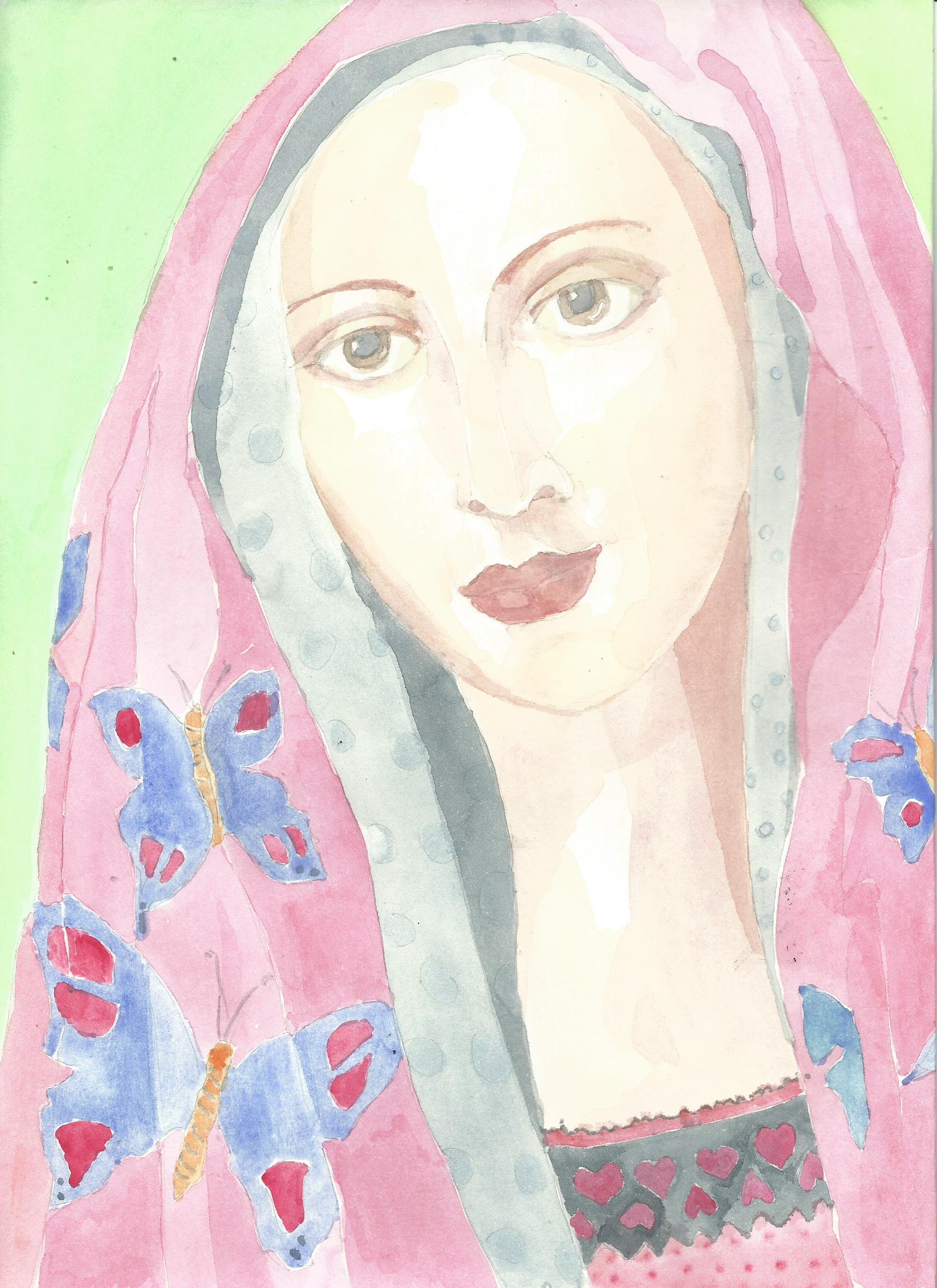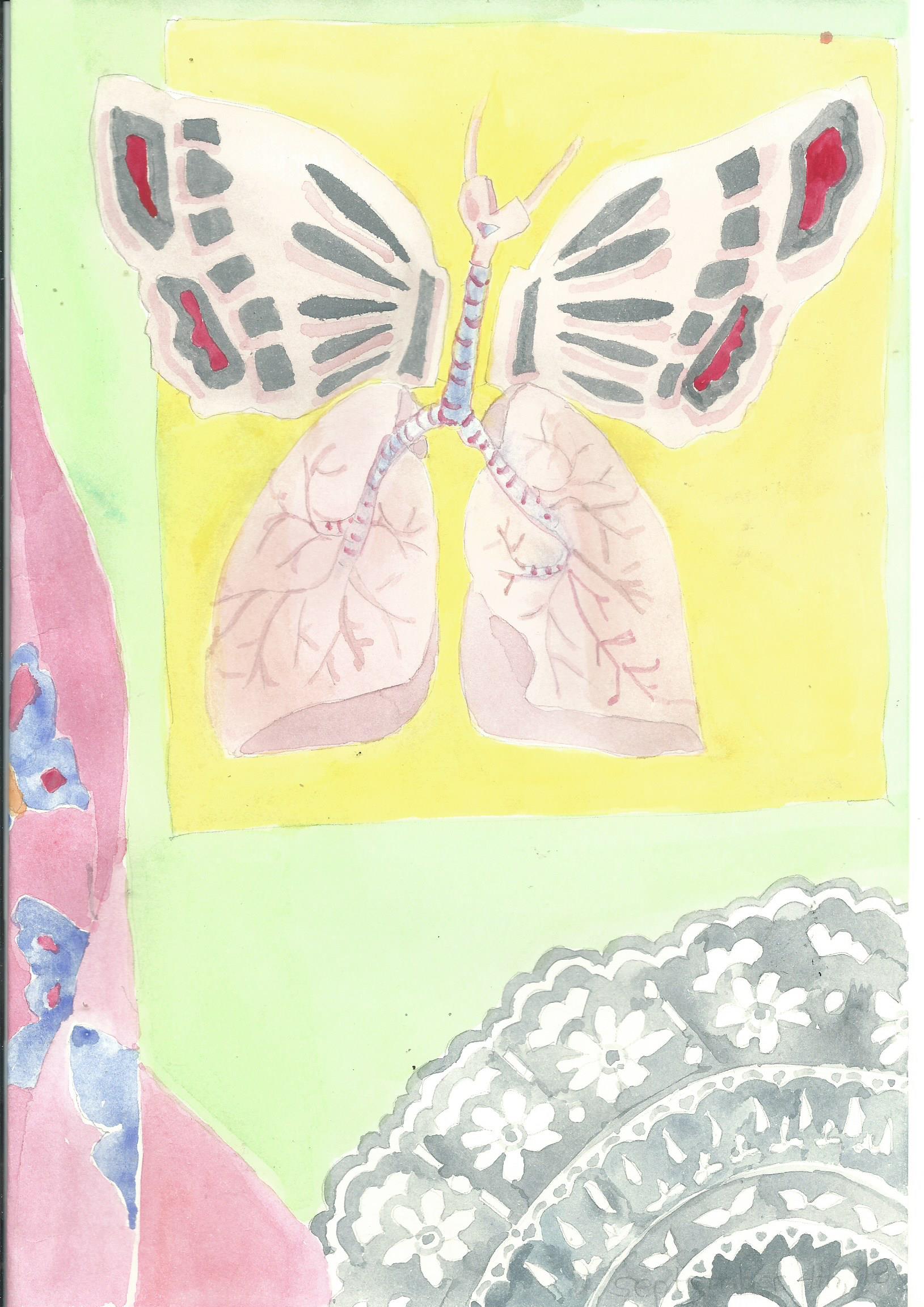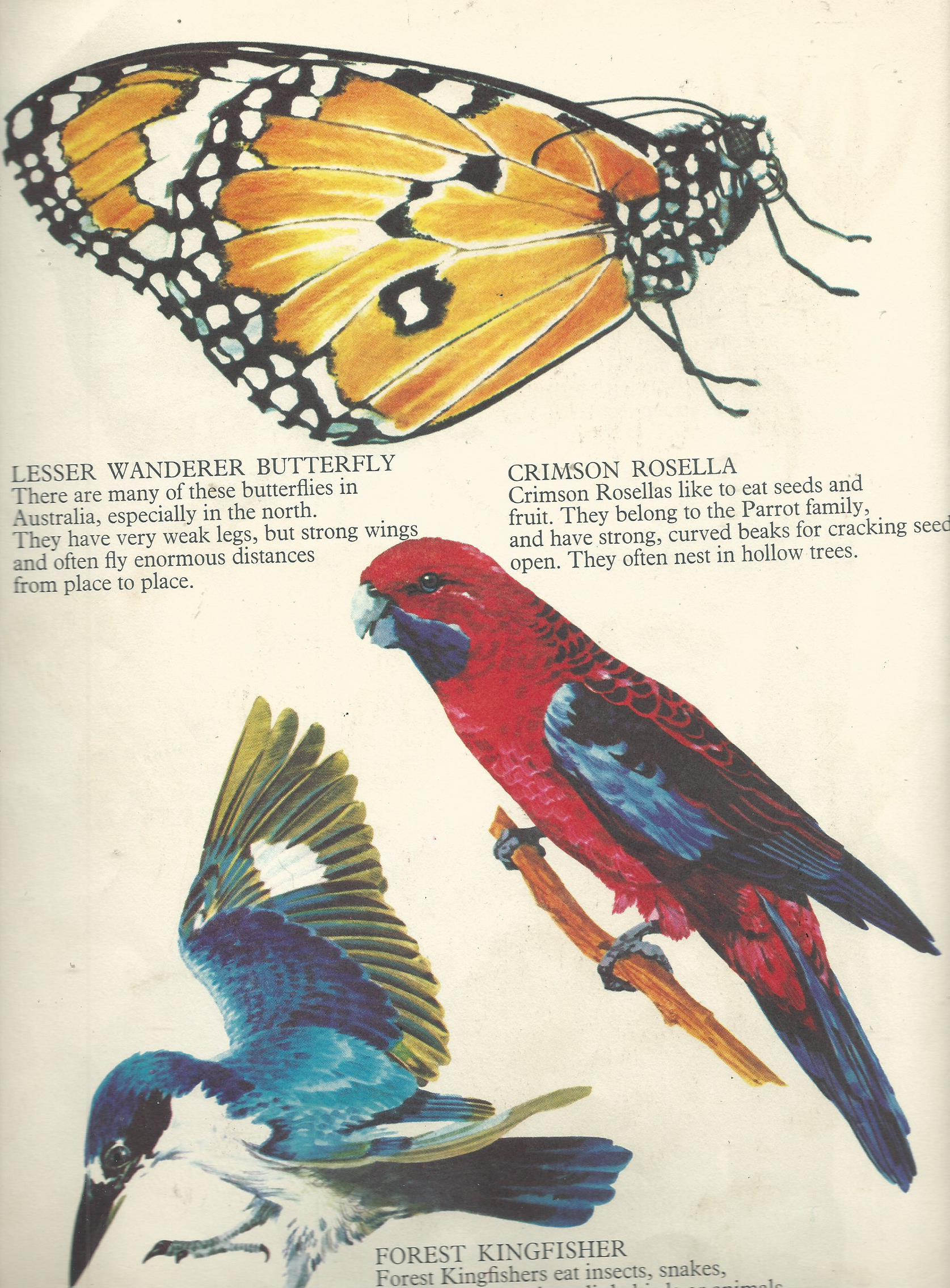

‘The density of the ego, the historical I, losses its density through suffering or spiritual practices or both; the egoic or surface self diminishes in its intensity… becomes transparent, so it does not block the deep I … The egoic self breaks, cracks open and makes space for something else to arise….’ Eckhart Tolle
“Without an understanding of myth or religion, without an understanding of the relationship between destruction and creation, death and rebirth, the individual suffers the mysteries of life as meaningless mayhem alone.” Marion Woodman
A process…. Butterflies
Art journaling is enhanced further if the product is processed through additional means like meditation, writing, etc. For instance, this watercolour was complimented by a ‘poem’ that spontaneously arose as I later looked at the image:
Lady in purple robes / Butterflies fluttering / Flower petals gifted with mobility / Circle of delicate energy.
A butterfly rests on her shoulder / For one fleeting moment / To remind her of death and rebirth.
She thinks / Maybe it is Grace that has touched her / Maybe it is Life (4/9/’18).
So, one can choose to explore the whole, but also, particular themes that emerge in an image. The first obvious association I made concerning the butterfly was the process of change and transformation. The caterpilar-butterfly cycle is a powerful metaphor of the labours of change (death and rebirth). I then googled butterfly and spent a little while reading all sorts of interesting things. And because I am fascinated by nature facts, for instance, I read about the Monarch Butterflies’ amazing four year migratory journey. The Monarch butterfly survives by migrating and hibernating each year. They are the only insect that survives by making a 2500 mile journey every year, in order to survive. What is more amazing is that this single journey is completed through four generations of offspring due to the 2- 6 week life span of most adult Monarch butterflies.

As a result, snippets of natural science lessons of childhood arose. I still have that beloved tattered natural science book. The Lesser Wanderer Butterflies, found in Northern Australia mostly, have weak legs and strong wings, which alow them to fly long distances, from place to place. And the Regent Skipper Butterfly is called skipper because it seems to skip through the air as it flies in short bursts…..
And then I listened to a short TED talk at: https://www.youtube.com/watch?v=LKrWUz9k7k0 by a young woman, Alexa Chavarry, who courageously shared her story of engaging with self-harm behaviours and talked about The Butterfly Project. Below are the rules and a definition of the blog: ‘this is an anoymously-run blog for you. i want to hear your stories. i want to see pictures of your butterflies. please, don’t be ashamed to share anything. we are all human, and i’m only here to serve’.
THE RULES:
1. when you feel like you want to cut, take a marker or pen and draw a butterfly wherever the self-harm occurs.
2. name the butterfly after a loved one, or someone that really wants you to get better.
3. NO scrubbing the butterfly off.
4. if you cut before the butterfly is gone, it dies. if you don’t cut, it lives.
5. another person may draw them on you. these butterflies are extra special. take good care of them.
6. even if you don’t cut, feel free to draw a butterfly anyways, to show your support’.
I re-read John Keat’s love letter: ‘I almost wish we were butterflies….’ and made a note to watch the movie (Bright Star), and Emily Dickinson’s poem: “A power of Butterfly must be -The Aptitude to fly. Meadows of Majesty concedes – And easy Sweeps of Sky”,
And also, parts from a book by Lisa Genova: “She liked being reminded of butterflies. She remembered being six or seven and crying over the fates of the butterflies in her yard after learning that they lived for only a few days. Her mother had comforted her and told her not to be sad for the butterflies; that just because their lives were short didn’t mean they were tragic. Watching them flying in the warm sun among the daisies in their garden, her mother had said to her, see, they have a beautiful life. Alice liked remembering that.”
